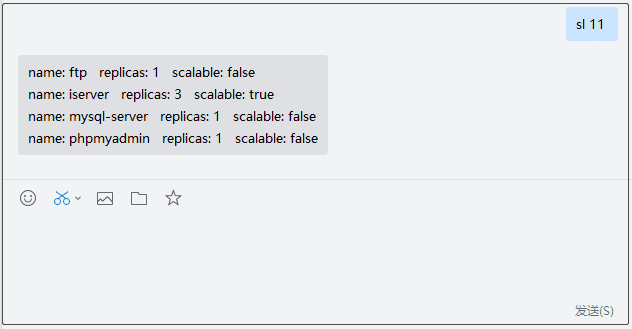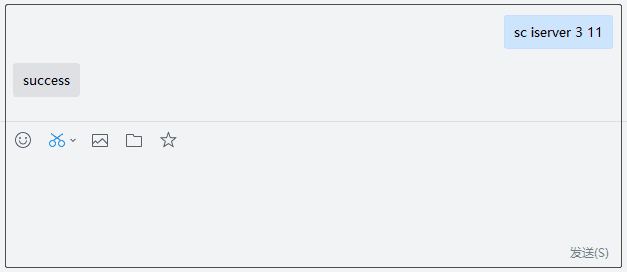Tutorial
WeChat Work Alarm Usage
After associating iManager with WeChat Work, the system will send alarm messages to WeChat Work automatically. More than that, administrator can also send commands to control iManager.
Basic Commands
The basic commmands are listed below:
- ‘h’: Get the list of basic commands.
- ‘l’: Get the list of environments.
- ‘sl’: Get the services list of specified environment.
- ‘sc’: Scaling the service.
- ‘a’: Get the list of alarm rules.
- ’s’: Get the list of silenced alarm rules or silence the alarm rule.
Notes:
The commands that can not be recognized will return the list of basic commands, just like the command ‘h’.
Help Commands
All the Basic Commands + ‘h’ can get the detailed introduction of the basic commands.
For example, ‘sl’ + ‘h’. Send ‘sl h’ in the alarm application:
sl hReturn to the detailed introduction of ‘sl’ command:
- Methods: Explains how to use ‘sl’ command and the fuction of ‘sl’ command.
- Parameter: Explains the parameters in ‘sl’ command.
- Examples: Provides the examples of ‘sl’ command.
Examples
Background: The first time to use ‘sc’ command.
-
Sends ‘h’ to get the list of Basic Commands(sends other unrecognized characters will also return the list of Basic Commands).
h -
Executes help commands to get the detailed introduction of ‘sc’.
sc hFrom the explaination, the ‘sc’ command is used for scaling service. The required parameters are including the name of service, the number of nodes after scaling, and the ID of environment. The name of service can be got by ‘sl’ command; the number of nodes after scaling is depending on the settings of the administrator; the ID of environemnt can be got by ‘l’ command.
-
Gets the name of service.
-
Refer to the introduction of Help Commands to know the ‘sl’ command.
From the explaination, ‘sl’ command is used for getting services list of specified environment. The required parameter is the ID of environment, and can be got by ‘l’ command.
-
Executes ‘l’ + ‘h’ to understand the ‘l’ command.
l hFrom the explaination, ‘l’ command is used for getting the list of environments, it does not need any parameter.
-
Gets the list of environments.
lFrom the explaination, the list has the information of ID, name, and type of the environments. If we want to scaling the environment with id 11, the required ID of environment in ‘sl’ command should be ‘11’.
-
Gets the services list of the environment ‘11’.
sl 11As the screenshot above, the list has the information of name, replicas, and scalable of the services. Only the service named ‘iserver’ can be scaling, so we will scaling iserver service.
-
-
Scaling iserver service, the number of nodes after scaling is 3, the ID of environment is 11, execte ‘sc’ command.
sc iserver 3 11If the result returns ‘success’, it means scaled the service successfully.

